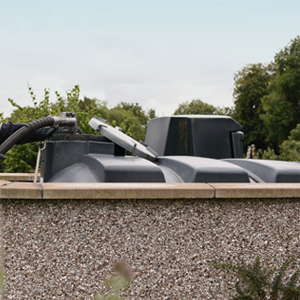Your oil storage tank is an important part of your fuel system, especially if you rely on oil to fuel your business, or your household hot water and heating. Good maintenance will help your tank maximise its useful working life and ensure it remains safe for use.
A failure of your fuel oil storage tank leading to a spill of the oil content is very serious and could cause harm to the environment through contamination and pollution. As the household or business owner, it is your responsibility to ensure the oil storage tank and associated pipework are safe and fit for use.
The good news is there are some easy steps you can take to help look after your fuel storage tank. A well maintained tank will be less likely to suffer an accidental spill and should remain usable for between 10-15 years.
Step 1: Get to know your Fuel Oil Storage Tank:
Being comfortable with how your oil system and storage tank works is important, particularly in an emergency situation such as an oil spill. It pays to spend time familiarising yourself with your oil storage tank and any pipework or valves. Each oil tank and system will be different, therefore, whether you are new to oil and have little or maybe even no experience, or if you’ve recently moved house and have some previous experience, it is worthwhile spending time checking the following:
You know how to use the valves on the oil storage tank
If you suffer a leak in the pipework or valves leading from your oil tank, it is important that you know how to stop the oil flow using the isolation valve, to prevent further oil from spilling.
You know the capacity of your fuel storage tank
The amount of oil a storage tank can hold can vary a lot depending on the make and model. Some slimline models designed for household heating oil could hold less than 1000 litres, or a fuel depot style storage tank designed for heavy commercial use could hold up to 9400 litres. The capacity of oil your storage tank can hold should be printed on the storage tank itself.
This information is useful to provide your oil supplier with, as this will help them estimate how much you might take if you order a fill of your tank. They can usually keep a note of this on your account, so you won’t need to provide this information every time your order.
It is also important that you know how to operate the oil level monitoring gauge attached to the oil tank. This is usually a clear tube, which indicates the level of oil in the tank. We recommend that you do not allow the level of oil in the tank to fall below 12” from the bottom to prevent commonly-occurring sludge entering the pipework, which could lead to a boiler breakdown and would require a visit by an engineer to rectify.
You know the location of any hidden/underground pipework
Identifying and knowing the location of any underground pipework associated with your oil storage tank is a good idea. Should any building or groundwork be required, knowing the location of the pipework will help to prevent any damage to the fuel lines which could cause an oil spill.
After following the steps above and getting to know your fuel storage tank, it will then be easier to identify any small changes which could indicate that the tank is starting to develop a fault. The situation can then be monitored and if necessary measures to rectify can be taken before the issue leads to a serious open crack or split, or even an oil spill.
Step 2: Good maintenance practices to help look after your plastic oil storage tank:
In general, if your oil storage tank remains in good condition it should last a long time and not require much in the way of ongoing maintenance. Below are our best practices to ensure your fuel oil storage tank is well maintained:
Inspect your fuel oil storage tank monthly
We recommend that you take time to inspect your fuel storage tank, associated pipework and surrounding area at least once a month. This inspection should look for any changes to the oil tank, such as cracks, splits, bulges or whitening. Signs of vegetation die back or wet patches surrounding the tank could be an indication that there is an oil leak and should be investigated by an OFTEC engineer. Read more about inspecting your oil tank and the signs to be aware of here.
Have an OFTEC engineer inspect your fuel oil storage tank annually
In addition to monthly checks of your oil storage tank, we would recommend that an OFTEC registered engineer completes an inspection of your tank at least once a year. The engineer is fully trained to identify faults or potential dangers with your oil tank and may be able to pick up on something you have missed. Usually a tank inspection is carried out at the same time as an annual oil boiler service. Speak to our boiler service team today for more information on boiler servicing and tank inspections.
Ensure there is suitable protection for your outdoor tank
It is important to consider what protection your outdoor plastic oil storage tank will require. Dangers such as strong winds, broken or low hanging tree branches, and, falling snow or icicles, could all lead to damage being caused to your oil storage tank. Should you notice any of these potential dangers the situation should be rectified to protect your oil storage tank.
